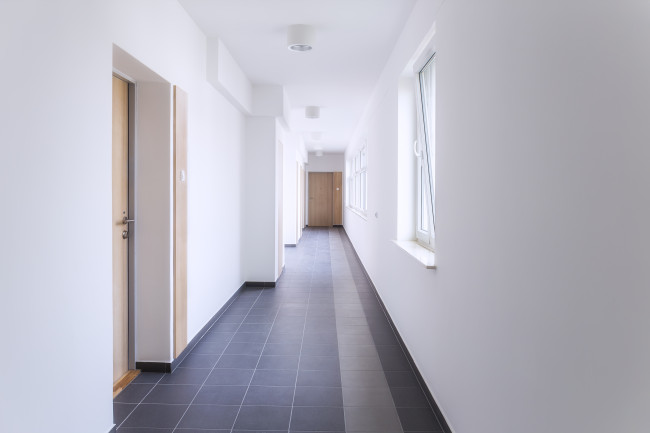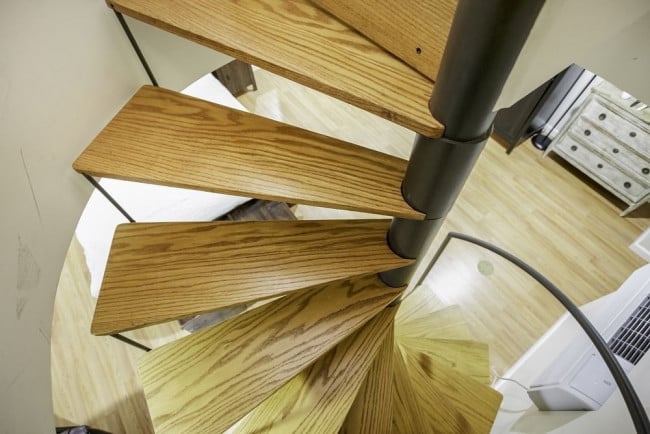How I convinced our neighbors to sell their Park Slope co-op to us
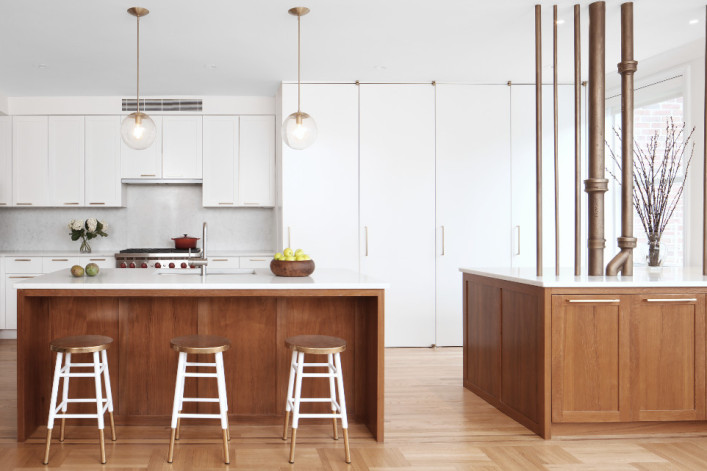
As part of the renovation, a wall between the existing kitchen and living room was demolished to create an open layout. Architects found many pipes in the wall, which they convinced the author and her husband to incorporate into a second, very striking-looking island.
Delson or Sherman Architects, Photo by Maxime Poiblanc
Sixteen years ago, my husband and I stretched to buy our two-bedroom, two-bath co-op on Prospect Park West in Park Slope, Brooklyn. It was such a big purchase for us that I had a panic attack in the elevator of the lawyer’s office on our way to sign the contract.
We assumed, even though we didn’t have children at the time, that this two bedroom would be it for us. No more moves. After all, we had bought in the highly regarded PS 321 school zone and chosen an elevator building that could accommodate a stroller and groceries for a growing family.
We would soon find out how wrong we were, when a few years later, we ended up with a son and a daughter sharing a bedroom. Clearly, they would need their own rooms someday. But we loved our location and didn’t want to move to a nearby neighborhood that might be more affordable. A desire to gain more space and stay exactly where we were took hold of us. We just had to figure out how to convince our neighbors to let us buy their place.
[Editor's Note: Brick Underground's Inside Stories features first-person accounts of dramatic, real-life New York City real estate experiences. Have a story to share? Drop us an email. We respect all requests for anonymity.]
I have a friend in the exact same apartment two floors up and the two of us ran the loop in Prospect Park together at least one morning a week. As we ran, we often talked about our mutual (and very NYC) fantasy: One day, our respective neighbors in the one-bedroom apartments next door would sell their apartments to us, so we could create combined apartments, giving us both the space we needed remain in our awesome building.
In my running partner’s case, she knew it wouldn’t happen—her neighbors were a lovely couple that seemed happily settled. In our case, however, our neighbors were in their 80s and we knew the wife was entering the early stages of dementia. We’d always had a neighborly relationship with them—they went to our temple down the block, he was friendly with our children and often spoke to them about his volunteer work at the Intrepid Sea, Air & Space Museum as a veteran of the Korean war.
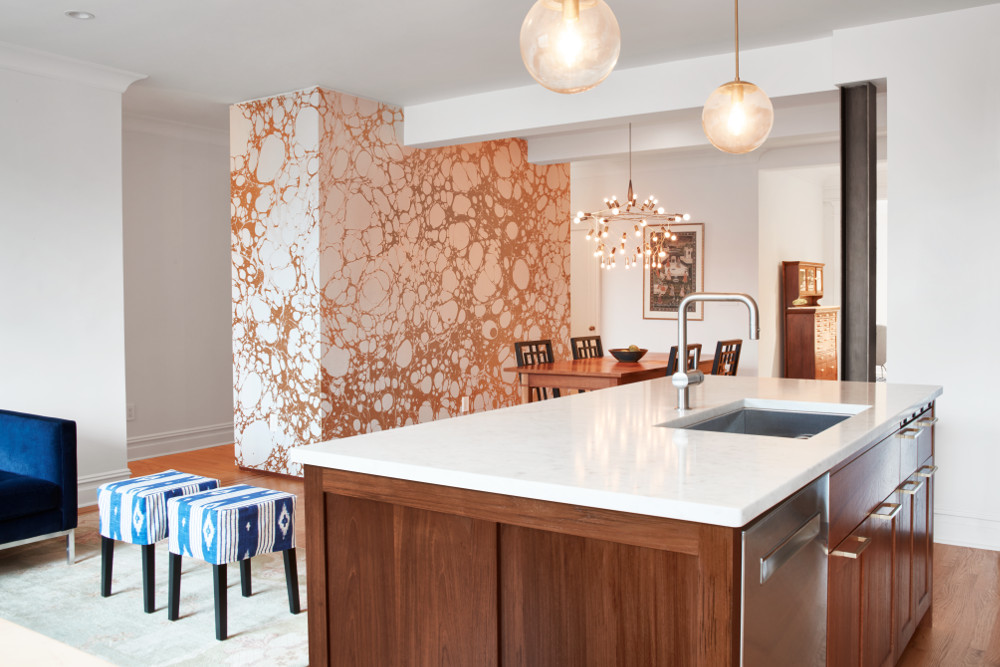
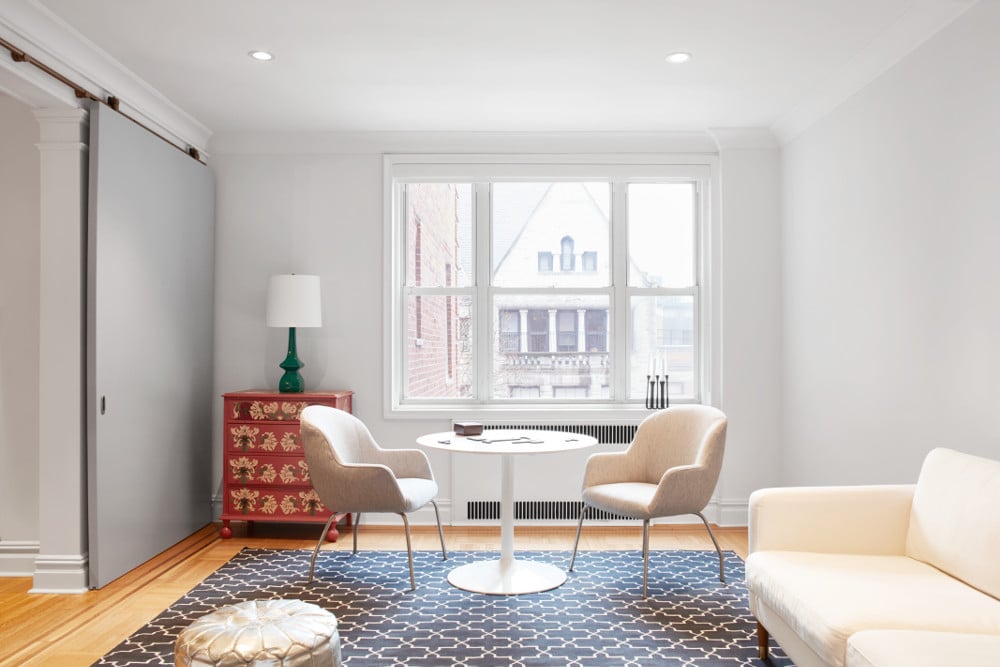
My husband and I had many conversations debating if and how we should approach our elderly neighbors to see if they would sell their apartment to us. Would we seem rude? How should we ask? What exactly should we say?
After much discussion and worry, we invited them to our apartment for coffee one afternoon and delicately brought up the idea that if they ever were thinking of selling, would they be so kind as to come to us first. We explained we were looking for more space, and that our first choice would be to stay in the building. They didn’t seem to be offended and said that in fact they had been discussing moving down to Baltimore to be closer to their children and grandchildren. They’d be in touch. We felt relieved and excited.
A few days later, the husband followed up to say that no, they really wanted to stay in Brooklyn. It was their home and they didn’t plan on moving. So that was that.
House hunting
At this point, we were attending open houses, putting in offers, and getting turned away in favor of buyers offering all cash. (Who were these people? we asked ourselves.) Finally, we had an accepted offer on a house nearby. We went over the calculations many, many times, and in the end decided to play it safe and back out. It just felt like too big of a financial commitment. We would make do in our two bedroom and keep looking.
Then a year later, we came home from a family outing to discover a Post-it note on our front door from our neighbors. It said: “Matt & Ruth—please come by to speak with us.”
Our minds starting racing—had we done something wrong? Or maybe it was good news? Was it about the apartment? Matt went next door while I stayed home with the kids and tried to keep myself from putting my ear to a cup against the adjoining wall. About 20 minutes later, Matt came back and told us that they had decided to sell. The wife’s health was rapidly declining, and they decided to move into an assisted living complex near their children down in Baltimore.
The deal is on
Over the next couple of weeks, our neighbors had a few brokers give them estimates on what they thought it could sell for. We ended up paying more than they would have received if it had been on the market—the apartment needed a lot of updating, but they knew we really wanted it. We felt it was still financially sound to pay what they asked for, even with the double maintenance bill we’d be saddled with.
Then we turned our attention to making two units into one. In our 1939 building of over 50 units, no one had ever done an apartment combination! Our co-op board said that if an architect could show it was a feasible and safe combination, and the building’s architect agreed, then we could go forward.
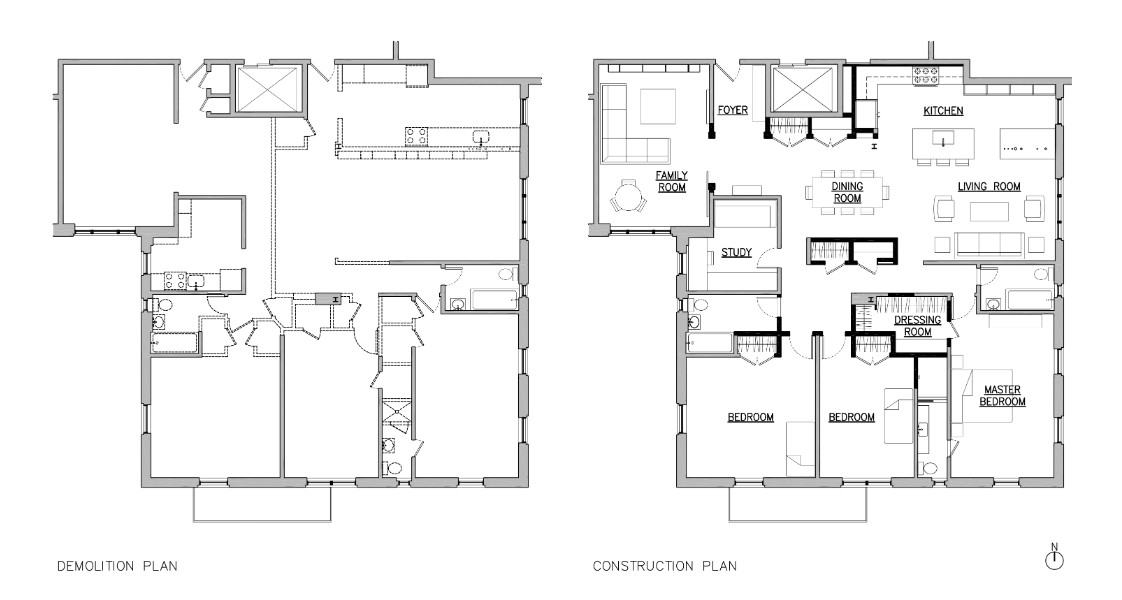
We interviewed a handful of architects and went with Delson or Sherman Architects, based in Brooklyn. They were experienced in apartment combinations and were confident about the paperwork side of things. We felt they’d be a good advocate for us in ensuing co-op board discussions. We also loved their aesthetic. For a contractor, we used TomChris Contracting Corp.
Architect Jeff Sherman sent out someone to drill a series of holes in the wall that joined our living room with the neighbor’s living room to see what they would find. Happily, it was shown not to be a supporting wall. The building’s architect agreed, papers were signed, and we moved forward working with our architects to draw up plans to submit to the Department of Buildings.
There was much back and forth on a closing date with our neighbors, and in the end, they stayed past the closing date, renting from us until it was time for them to move to Baltimore. We eventually received approval from the DOB and our co-op board. Our family moved into a local rental for six months while the demolition and construction took place. We certainly upset some neighbors during the process, though the actual work only took four months. After our renovation, our co-op board came up with a whole new list of building rules for future renovations. We all learned from the experience.
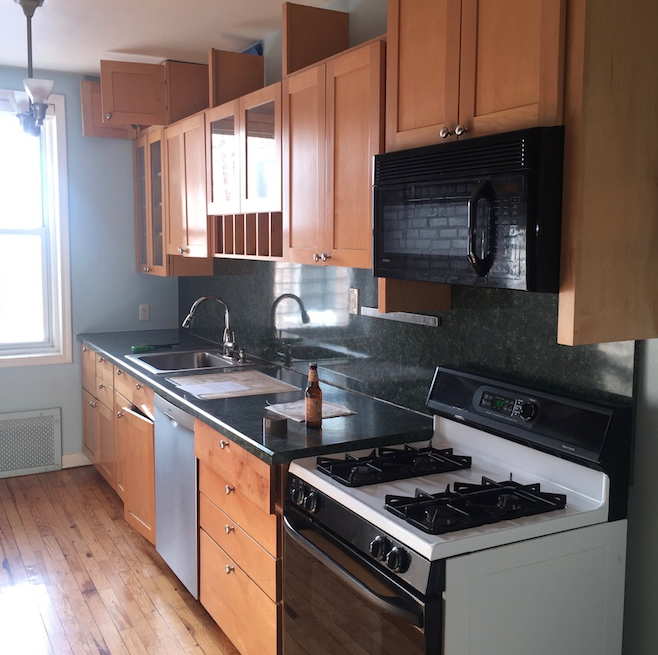
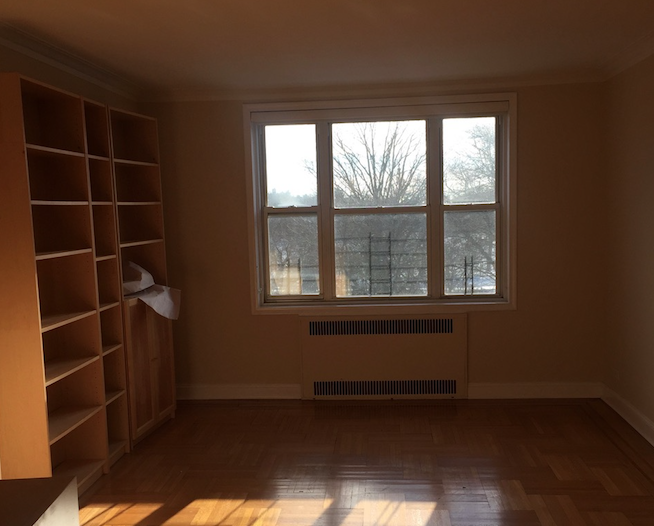
We now live in a four-bedroom, three-bath apartment and have kept our fantastic view of Prospect Park. We ended up taking down not just the adjoining wall between the two apartments, but also a wall between our old kitchen and our old living room, providing a light-filled open layout that we love. My husband and I sometimes think back to the house we almost bought before our neighbors were willing to sell. Financially, we still made the right choice, even with the cost of the renovation and the double maintenance. A house would have been a bigger burden, even though the prospect of having our own backyard still tugs at me.
Shortly after our renovation, the apartment downstairs from our original two bedroom went on the market. My kids asked if we should buy it and put in a staircase! No, we have just enough space, we replied. But it was tempting to fantasize about.


















